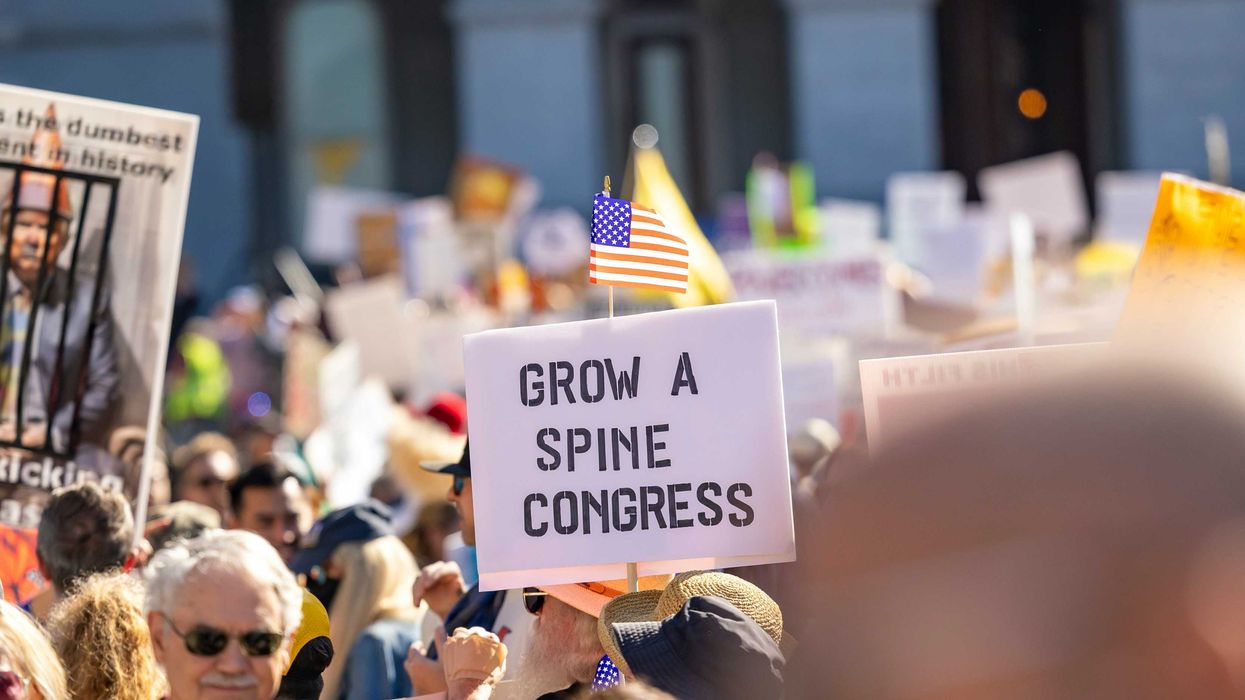Thomas Jefferson would have loved TikTok. He would have been a fierce champion of a generation of Americans — labeled Gen Z, or iGen — who grew up with cell phones in their hands, a strong penchant for escapism and an outsized regard for social media influencers.
You see, for Jefferson, it was all about thwarting tyranny. The opening lines of the Declaration of Independence herald his conviction: "When in the course of human events, it becomes necessary for one people to dissolve the bands which have connected them with another," he wrote, "it is the right of the people to alter or abolish [the existing government], and to institute new Government, laying its foundations on such principles and organizing its powers in such form, as to them shall seem most likely to effect their Safety and Happiness." His loathing of King George III on full display.
But those same sentiments and that same loathing, Jefferson would argue, should now be directed squarely at him. And at Madison. And Hamilton. At Adams and, yes, even George Washington. America's most eloquent 18th century wordsmith knew that tyranny was not the sole estate of a mad king. Despotism can also come in the form of one generation holding unconstrained political authority over another. "The earth belongs in usufruct to the living, the dead have neither rights nor powers over it," he famously wrote to James Madison, by which he meant that one generation has no more right to regulate the lives and liberty of another than does a foreign power have the right to oppress its colonial subjects. Today's Americans, he would say, should shed the chains that unjustly bind them to the founding generation.
And that means rewriting the Constitution.
To snap out of our current political funk, Jefferson would implore us to return to Philadelphia to design a new fundamental law that reflects a 21st century spirit. But it's not just any constitutional framer who should be invited, and it's definitely not those, like me, from the silent or baby boomer generations. No, the stately Virginian would insist that there is little difference in a Constitution written by a generation or two removed from the current one as there is in a Constitution drafted more than 10 generations ago. Both are tyrannical.
One bold idea to revitalize and renew the American political experiment is thus not new at all; it is the Jeffersonian idea that America's latest generation — iGen/Gen Z — deserves, and indeed has the sole right, to organize a constitutional drafting party.
A federal Constitution drafted by iGen framers would look a good deal different than one prepared by other generations. A recent study reveals that seven in 10 members of the iGen community favor an "activist" and energetic government, one that "should do far more than our current political institutions to solve America's social and political ailments." Sixty percent of the silent generation and 50 percent of baby boomers favor the exact opposite.
And that's not all. 43 percent of the right or Republican-leaning iGen cohort acknowledge serious racial injustice in America, more than double the right or Republican-leaning baby boomers (20 percent).
Only 15 percent of the iGen generation views same-sex marriage as a "bad thing," whereas 32 percent of baby boomers and a full 43 percent of the silent generation condemn it.
Our most educated generation ever, iGen members favor broader constitutional rights, including textual protections for the environment, health care and the many social welfare safety nets. The same cannot be said for more senior generations, the ones that typically are recruited to compose modern constitutions.
The iGen generation wants stronger presidents, more aggressive legislatures and more activist courts. The silent generation and the baby boomers, in contrast, want to temper Alexander Hamilton's "energetic" executive, corral judicial activism and hold members of Congress close to the vest.
The members of iGen likely would favor a parliamentary system of government and alternative methods of voter choice (including ranked-choice voting). Older generations will doubtless gravitate to the status quo, the system of government most familiar — and most beneficial (profitable?) — to a population that enjoys a privileged financial, political and social station. There is a reason most newly drafted constitutions around the world and at the state level resemble the U.S. model.
To be sure, iGen trendd more conservative — more libertarian, really — but (ironically given his reputation for cutthroat partisanship) this is not a partisan end-around for Jefferson. It's about a just democracy, equitable representation and political legitimacy.
Those on the left have to understand that an iGen Constitution might include stronger gun rights and safeguards for digital freedom, while those on the right have to recognize that such a document likely would outlaw capital punishment, support abortion rights and legalize marijuana use. The iGens defy traditional partisan categories, and that's a good thing in a highly polarized, tribalist environment.
Almost 70 million Americans comprise the iGen village. A bold suggestion? Give their representatives a shot at crafting a constitutional document that reflects the world they will principally shape. Invite their delegates to Philadelphia to imagine a political design that exhibits their unique perspectives and their distinctive priorities. Give them pen and parchment and trust that they are capable of "establishing good government from reflection and choice." And then let Jefferson's unheeded refrain that "the earth belongs to the living" resound.






















 Despite signing a mortgage that pledged he would live in each house, Trump listed both homes as rentals. Palm Beach Daily News via Newspapers.com. Redactions by ProPublica.
Despite signing a mortgage that pledged he would live in each house, Trump listed both homes as rentals. Palm Beach Daily News via Newspapers.com. Redactions by ProPublica.
 In 1993, Trump signed a mortgage for a “Bermuda style” home in Palm Beach, pledging that it would be his principal residence. Just seven weeks later, he got another mortgage for a seven-bedroom, marble-floored neighboring property and attested that it too would be his principal residence. Obtained by ProPublica
In 1993, Trump signed a mortgage for a “Bermuda style” home in Palm Beach, pledging that it would be his principal residence. Just seven weeks later, he got another mortgage for a seven-bedroom, marble-floored neighboring property and attested that it too would be his principal residence. Obtained by ProPublica